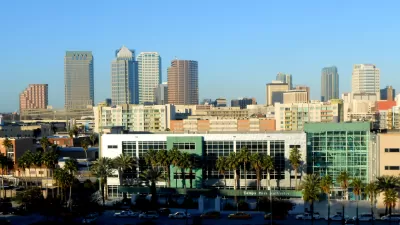An analysis from the San Francisco Chronicle identifies twelve of the biggest and most influential owners of rental properties in the San Francisco Bay Area.

A team of San Francisco Chronicle reporters—Susie Neilson, Emma Stiefel, J.K. Dineen, and Lauren Hepler—conducted an in-depth analysis of the Bay Area’s property ownership records to trace the real ownership of the region’s rental properties.
“California doesn’t have hard-and-fast rules on how property owners identify themselves; large corporations, hedge funds and even wealthy families often purchase multiple homes through shell companies or trusts, shielding their names from ownership records.” To get more clarity, the team “used machine learning methods to parse the data and called on dozens of experts and additional data sources” to narrow down the 12 most influential property owners in the region. According to the authors, “We believe this is an unprecedented effort to uncover rental ownership and management networks across all nine counties in the region: Alameda, Contra Costa, Marin, Napa, San Francisco, San Mateo, Santa Clara, Solano and Sonoma.”
The article lists the 12 owners and details about their properties, business practices, the demographics of their tenants, the geographic range of each owner’s properties, information about inspections and safety violations, eviction practices, and more. The authors note that “Even if the owner of your property isn’t on our list, you can learn more about who owns it by using our map of nearly 2.3 million Bay Area properties here.”
FULL STORY: These 12 secret power players are shaping the Bay Area housing market

Study: Maui’s Plan to Convert Vacation Rentals to Long-Term Housing Could Cause Nearly $1 Billion Economic Loss
The plan would reduce visitor accommodation by 25,% resulting in 1,900 jobs lost.

North Texas Transit Leaders Tout Benefits of TOD for Growing Region
At a summit focused on transit-oriented development, policymakers discussed how North Texas’ expanded light rail system can serve as a tool for economic growth.

Why Should We Subsidize Public Transportation?
Many public transit agencies face financial stress due to rising costs, declining fare revenue, and declining subsidies. Transit advocates must provide a strong business case for increasing public transit funding.

How to Make US Trains Faster
Changes to boarding platforms and a switch to electric trains could improve U.S. passenger rail service without the added cost of high-speed rail.

Columbia’s Revitalized ‘Loop’ Is a Hub for Local Entrepreneurs
A focus on small businesses is helping a commercial corridor in Columbia, Missouri thrive.

Invasive Insect Threatens Minnesota’s Ash Forests
The Emerald Ash Borer is a rapidly spreading invasive pest threatening Minnesota’s ash trees, and homeowners are encouraged to plant diverse replacement species, avoid moving ash firewood, and monitor for signs of infestation.
Urban Design for Planners 1: Software Tools
This six-course series explores essential urban design concepts using open source software and equips planners with the tools they need to participate fully in the urban design process.
Planning for Universal Design
Learn the tools for implementing Universal Design in planning regulations.
City of Santa Clarita
Ascent Environmental
Institute for Housing and Urban Development Studies (IHS)
City of Grandview
Harvard GSD Executive Education
Toledo-Lucas County Plan Commissions
Salt Lake City
NYU Wagner Graduate School of Public Service





























